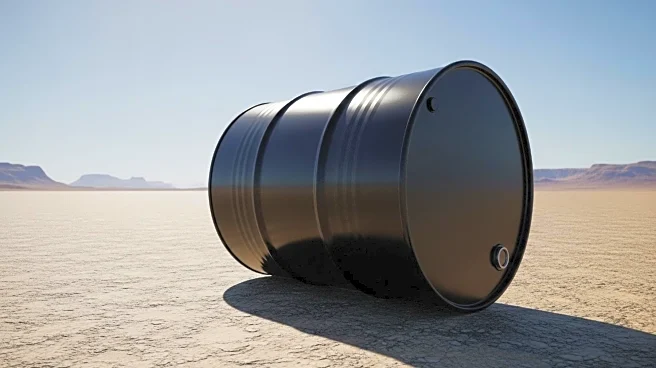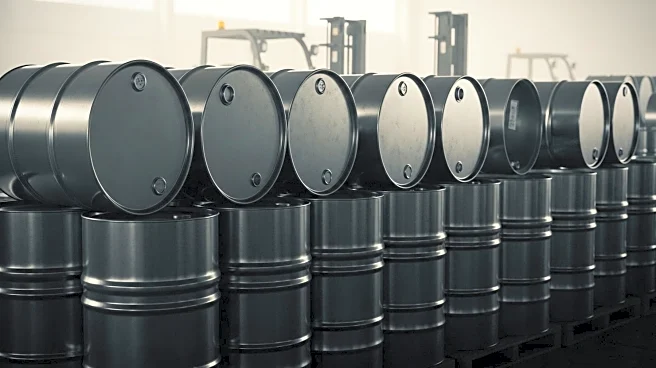What is the story about?
What's Happening?
The U.S. Energy Information Administration (EIA) has reported an increase in crude oil inventories by 1.8 million barrels for the week ending September 26, reversing a previous decrease of 600,000 barrels. This brings the total commercial stockpiles to 416.5 million barrels, which is still 4% below the five-year average for this time of year. Additionally, motor gasoline inventories rose by 4.1 million barrels, while production decreased to 9.3 million barrels daily. Middle distillate inventories also saw an increase of 600,000 barrels, with production dropping to 5 million barrels daily. The report has influenced crude oil prices, with Brent and WTI trading down on the day of the release.
Why It's Important?
The increase in crude oil and gasoline inventories has significant implications for the U.S. energy market. Higher inventories can lead to lower prices, affecting the profitability of oil producers and potentially benefiting consumers through reduced fuel costs. However, the decrease in production levels may indicate challenges in maintaining supply, which could lead to future price volatility. The data also highlights the ongoing adjustments in the energy sector as it responds to market demands and external factors such as geopolitical tensions and economic conditions.
What's Next?
Market participants will likely monitor upcoming EIA reports and other industry data to assess future trends in inventory levels and production rates. Oil producers may need to adjust their strategies to align with changing market conditions, while policymakers could consider measures to stabilize prices and support the energy sector. The impact on consumer fuel prices will also be closely watched, as fluctuations can affect transportation costs and broader economic activity.
AI Generated Content
Do you find this article useful?














